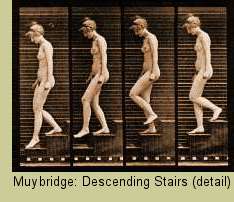
Digital Images and ImaginingsOtherwise, the long term results of such tuning corrections are open to speculation. As people become increasingly sensitized to absolutely accurate tuning, perhaps it will actually improve the non-musician's ear to off-key rendering. To young musicians it will ultimately improve the accuracy of their playing, just as recording has helped to improve performance standards in succeeding generations. However, the loss of inflection may also be another instance of the homogenization that recording has brought to performance standards, and a complaint often leveled at the international character that Classical Music has taken on in favor of local performance color (tunings of indigenous musics is a whole other topic of loss). A hopeful third possibility also emerges: with pitch becoming increasingly absolutely defined, composers and musicians will learn to hear pitch differentiation better. This will lead to more extensive exploration of alternate tunings both in traditional work and in new composition.
Time compression of this sort is done by percentage. In radio scheduling software, produced by a number of industry developers, simply load-up a 'Play-List' with program material and set the compression percentage. When the appointed schedule time arrives, the program material airs, but at a faster rate than originally recorded. The pitches remain the same, only the duration -- and subtly the tempo and timbre -- of the music are changed. A one percent change over an entire day will yield more than fourteen extra minutes of advertising time while allowing the 'same' program material to be run. One percent is actually very conservative. Stations in tight markets have compressed by as much as ten percent, but generally have backed off to about five or six percent in the face of audience complaints. Archly, a station using this technique may advertise that they play more music per hour (by song count) than other stations, and they will still be able to air a number of ads equal to that of the competition. One chief engineer I spoke with said that he wasn't concerned with the revenue so much as the sound, he liked to 'bump everything up by one percent because it makes the material have more pizazz!'
Copyright © 22 April 2000 Jeff Talman, New York City, USA
|

 Unknown to many listeners, subtle intrusive adjustments are also ubiquitous in modern radio production -- both in traditional and internet broadcasting. One of these methods is the ability to speed the flow of data transmission, while only subtly changing the content. Programming today is no different than in the past. In the states it is largely dependent on advertising. Advertising demands air-time. Program material demands air-time. There is a continual conflict about how much programming can/should be delivered versus the advertising or 'traffic' that the radio stations schedule. The industry remedy: software time compression of program material to gain advertising time and revenue.
Unknown to many listeners, subtle intrusive adjustments are also ubiquitous in modern radio production -- both in traditional and internet broadcasting. One of these methods is the ability to speed the flow of data transmission, while only subtly changing the content. Programming today is no different than in the past. In the states it is largely dependent on advertising. Advertising demands air-time. Program material demands air-time. There is a continual conflict about how much programming can/should be delivered versus the advertising or 'traffic' that the radio stations schedule. The industry remedy: software time compression of program material to gain advertising time and revenue.